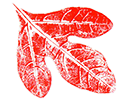Ok, this tip isn’t so much about attracting pollinators and backyard wildlife as it is about avoiding or mitigating issues. Carpenter bees are valuable native pollinators that play an important role in our ecosystem. However, it can be hard to remember and appreciate that when they are drilling holes into your porch or the side of your garage.

When carpenter bees chew a hole in your deck or other wooden structure, they are creating a nesting site. To them, your deck or other wooden structure is just a funny looking dead tree. Just as a fun side note, the wood they chew out of the hole doesn’t just “go away.” They use much of it to create what are essentially particle board walls between their brood chambers. In other words, they make individual rooms for their young out of the wood they remove from the hole.
Carpenter bees prefer to build their nesting tunnels in untreated, unstained, unpainted wood. One very easy method for keeping carpenter bees from drilling holes into your wooden structures is to paint or stain the wood. This will make it less attractive to the bees. Then place a piece of untreated, unstained, and unpainted pine lumber nearby. Make sure it is several inches thick so the carpenter bees don’t just chew straight through it. Pine is relatively soft wood and is one of their favorite woods for building nesting sites. Often, the carpenter bees will begin using the piece of pine you put out for them and will stop chewing holes in your newly painted or stained structures.
This method doesn’t always work and is less likely to work with large wooden structures like a log home or wooden barn with exposed rafters. However, this is a very simple, easy, and relatively inexpensive option to try which doesn’t harm the bees, but still protects your property. If you are having problems with carpenter bees, this technique may be worth giving a try before considering other options that tend to be lethal to the carpenter bees.

This article was part of Shannon’s original Kentucky Pollinators and Backyard Wildlife blog which evolved into the blog for Backyard Ecology.

Backyard Ecology: Exploring Nature in Your Backyard
Nature isn’t just “out there.” It’s all around us, including right outside our doors. Hi, my name is Shannon Trimboli, and I am the host of Backyard Ecology. I live in southcentral Kentucky and am a wildlife biologist, educator, author, beekeeper, and owner of a nursery specializing in plants for pollinators and wildlife conservation. I invite you to join me as we ignite our curiosity and natural wonder, explore our yards and communities, and improve our local pollinator and wildlife habitat. Learn more or subscribe to my email list at www.backyardecology.net.

Leave a Reply